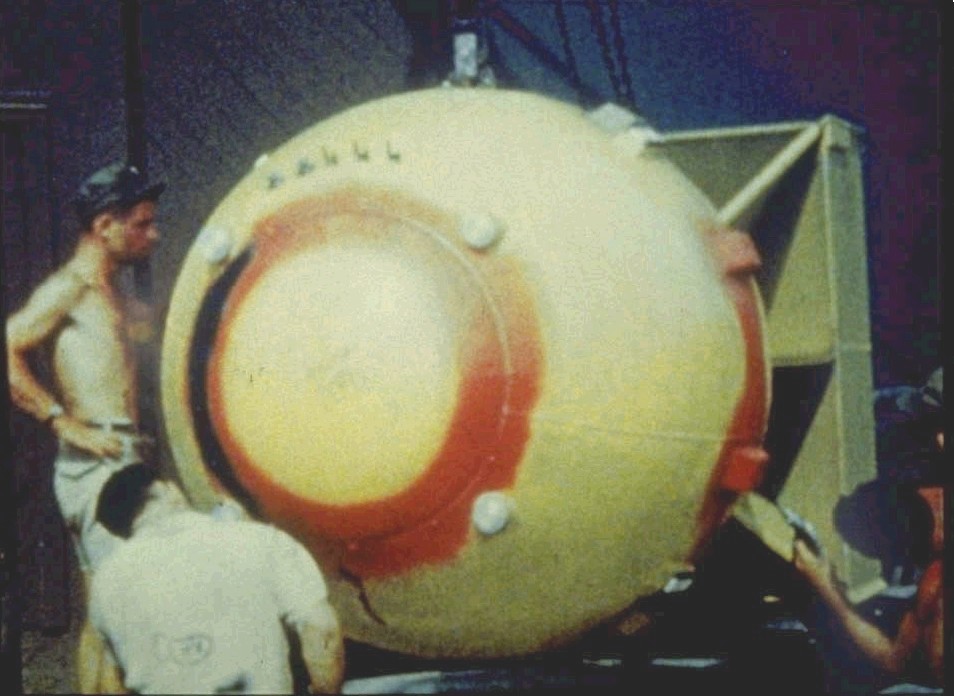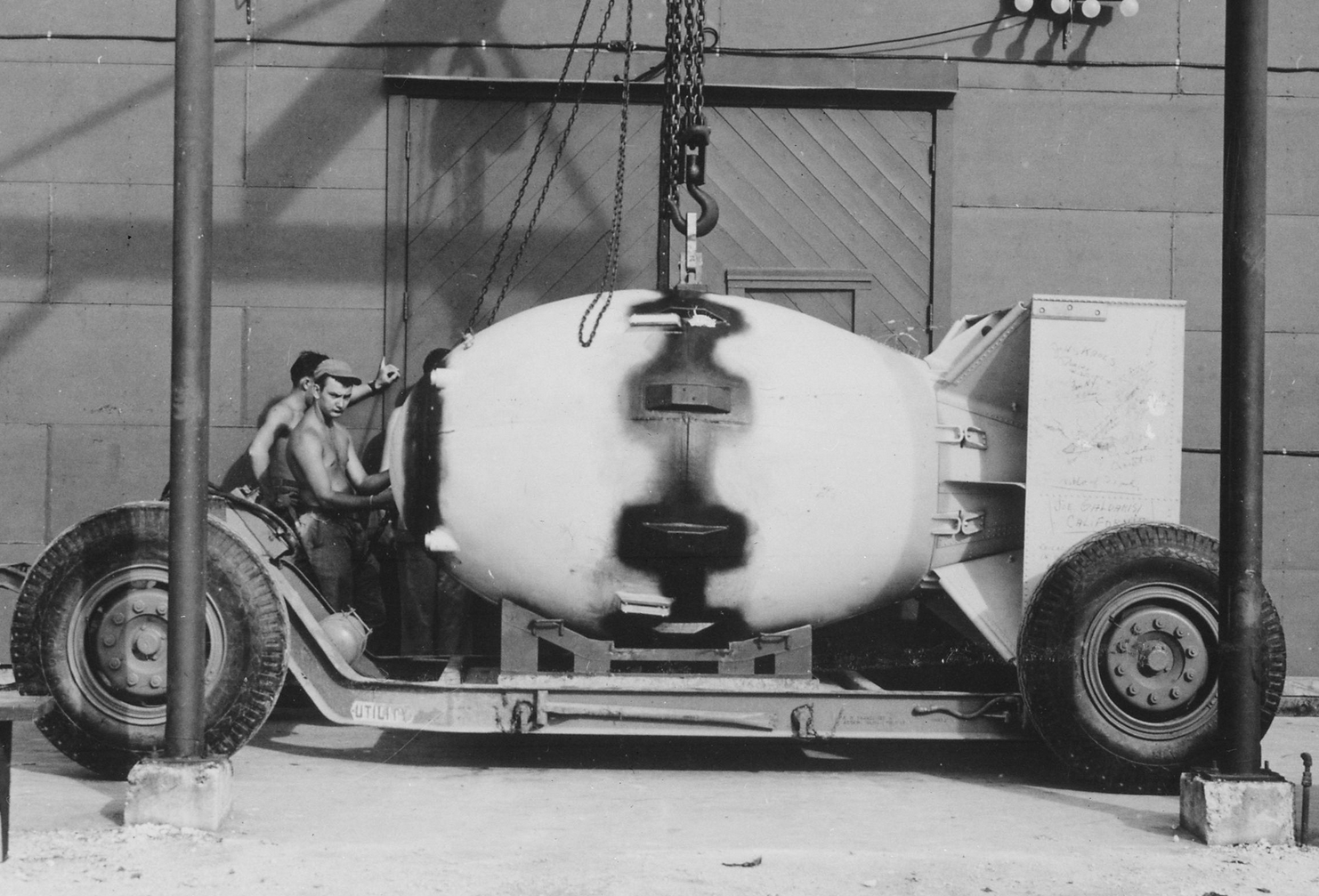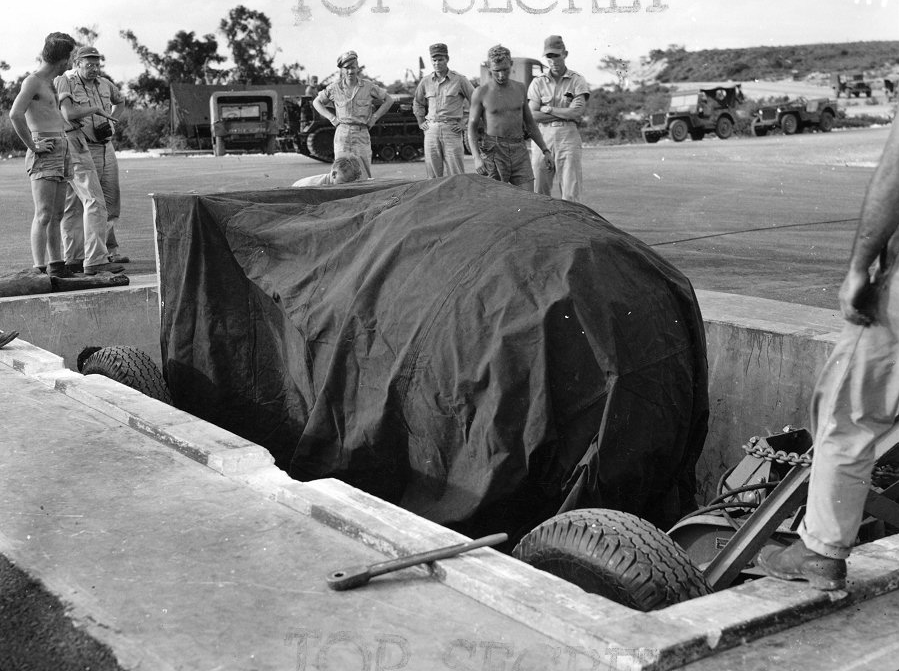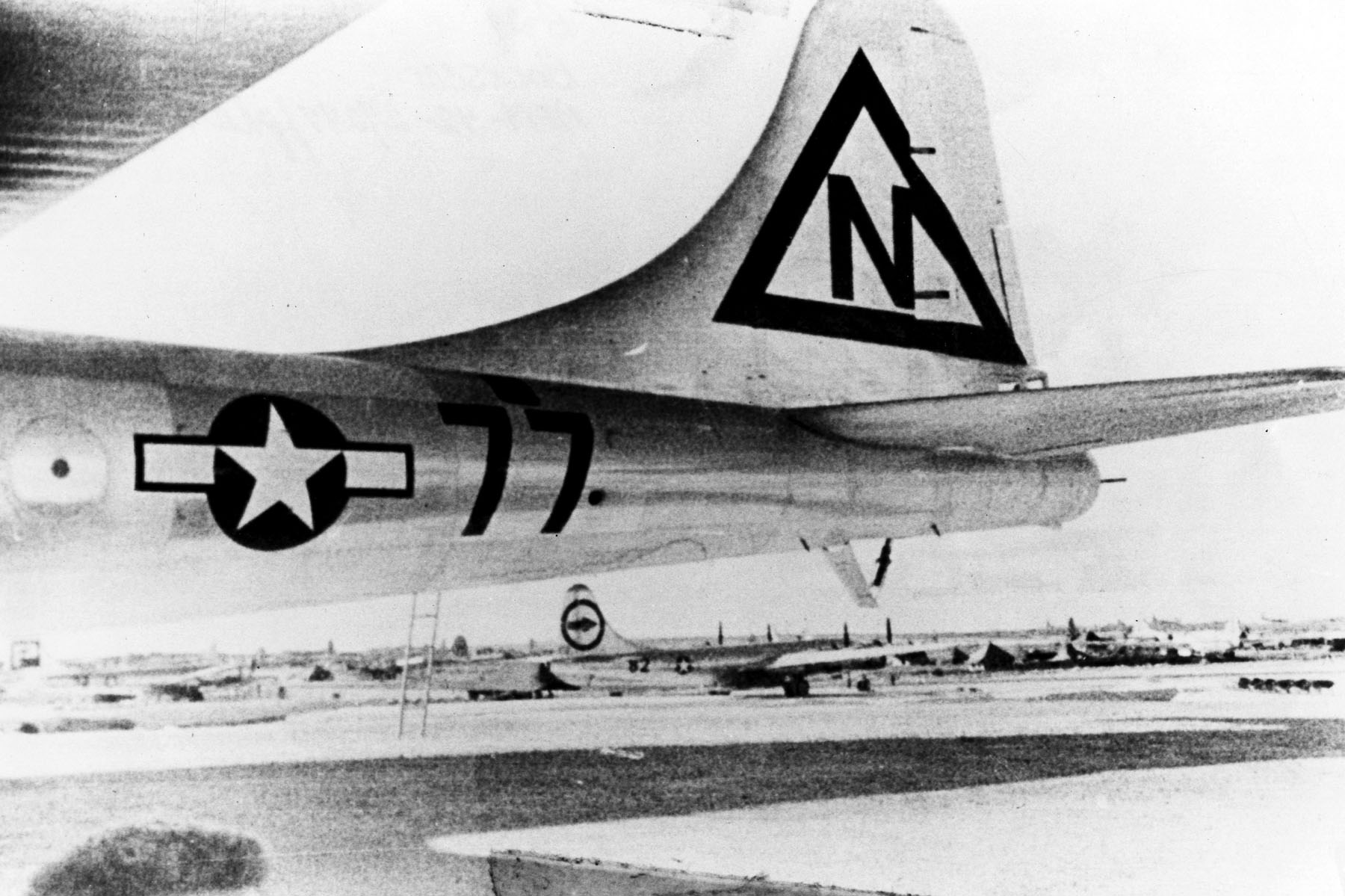
“So, the next day, Fat Man, the two armored steel ellipsoids of its ballistic casing bolted together through bathtub fittings to lugs cast into the equatorial segments of the implosion sphere, its boxed tail sprouting radar antennae just as Little Boy’s had done. By 2200 on August 8 it had been loaded into the forward bomb bay of a B-29 named Bockscar after its usual commander, Frederick Bock, but piloted on this occasion by Major Charles W. Sweeney. Sweeney’s primary target was the Kokura Arsenal on the north coast of Kyushu; his secondary was the old Portuguese- and Dutch-influenced port city of Nagasaki, the San Francisco of Japan, home of the country’s largest colony of Christians, where the Mitsubishi torpedoes used at Pearl Harbor had been made.”
—The Making of the Atomic Bomb, by Richard Rhodes, Simon and Schuster, New York, 1986, Chapter 19 at Page 739.

Fat Man was an implosion-type fission bomb, using plutonium (Pu-239) as the nuclear material. It was a very complex device which used 32 precisely-shaped explosive charges surrounding the spherical plutonium-alloy core, detonating with enough force to compress the core to double its normal density. This caused it to reach “critical mass” and the fission chain reaction began.

The Mark III bomb, unlike the gun-type “Little Boy,” required testing before combat use. The nuclear component of the bomb, called “Gadget,” had been exploded at 05:29:45 a.m., Mountain War Time, 16 July 1945, at the Trinity Site of the Alamogordo Test Range, in the Jornada del Muerta desert of New Mexico. The explosive yield of the detonation was estimated to be equivalent to 20–22,000 tons of TNT.
The fully assembled combat weapon was 12 feet, 8⅜ inches ¹ (3.261 meters) long, 5 feet, ¼ inch ² (1.530 meters) in diameter, and weighed approximately 10,300 pounds (4,672 kilograms).

¹ Overall length, ± ¼ inch
² Overall diameter, ± ⅛ inch
© 2017, Bryan R. Swopes
My dad was there, he was the assistant crew chief on the B-29 full house, which did weather reconasece for both bombings. He will be 92 years young this year.
“Full House” Martin-Omaha B-29-35-MO 44-27298, Victor 83, Major Ralph R. Taylor. Weather recon for Nagasaki, 6 August, strike spare, 9 August.
I love the articles and your insight thankyou!
I’ve wondered what the call sign of Bockscar was on the flight to Nagashi. The Enola Gay was Dimples 82
My research hasn’t come up with a call sign.
Strictly speaking, implosion results in a “critical density” as opposed to a “critical mass”.
My dad Mario Genta was there on the other side of Tinian. He didn’t say much but did tell us other planes on island flew out in case the bomb exploded when they were arming the Ebola Gay.
,,,Jornada del Muerta in English is “journey of death”.